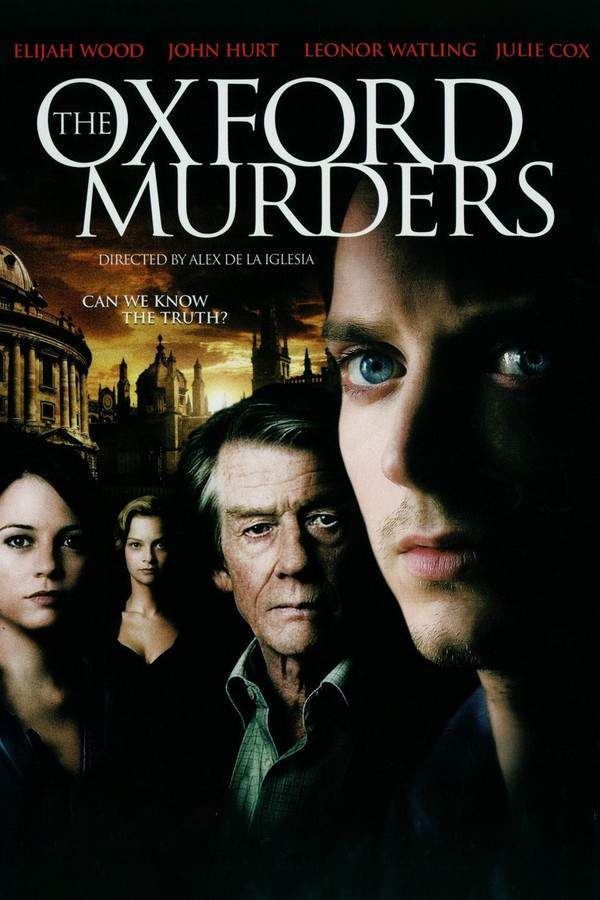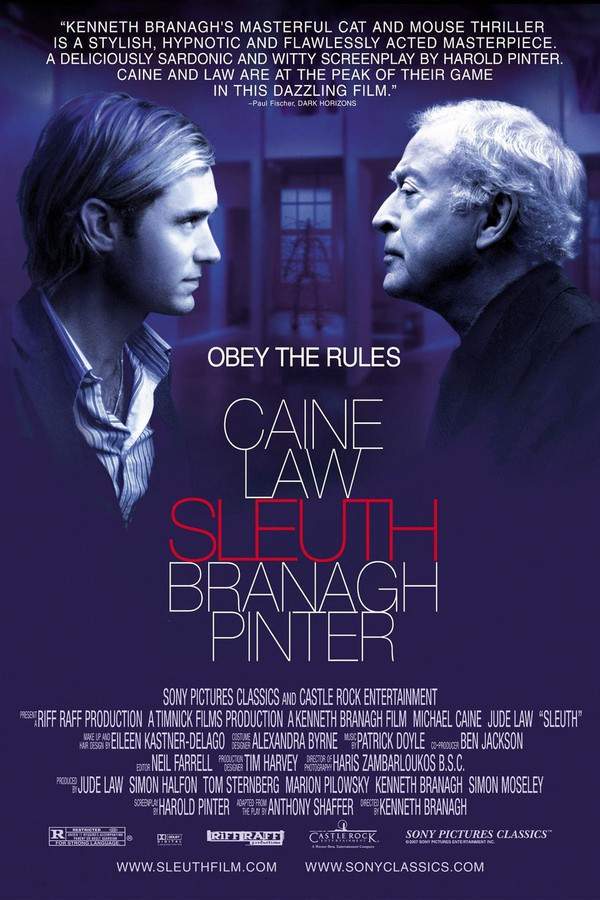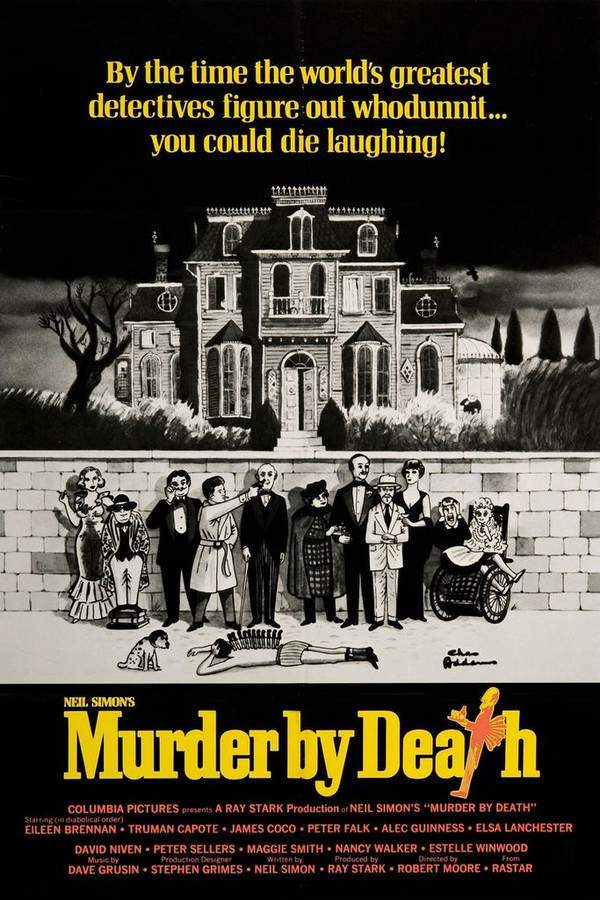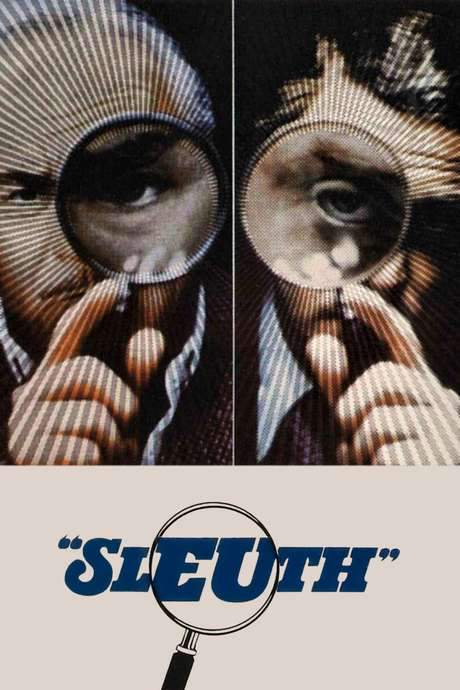The Oxford Murders 2010

A promising American mathematics student, Martin, seeks mentorship from a renowned philosophy professor, Arthur Seldom, at Oxford University. Their academic pursuits are shattered when a series of disturbing murders occur, disrupting the peaceful atmosphere. Martin and Arthur find themselves drawn into a dangerous investigation, compelled to decipher puzzling crime scenes and an elaborate mathematical enigma that may reveal the killer's motive and identity.
Does The Oxford Murders have end credit scenes?
No!
The Oxford Murders does not have end credit scenes. You can leave when the credits roll.
Meet the Full Cast and Actors of The Oxford Murders
Explore the complete cast of The Oxford Murders, including both lead and supporting actors. Learn who plays each character, discover their past roles and achievements, and find out what makes this ensemble cast stand out in the world of film and television.
External Links and Streaming Options
Discover where to watch The Oxford Murders online, including streaming platforms, rental options, and official sources. Compare reviews, ratings, and in-depth movie information across sites like IMDb, Wikipedia, Rotten Tomatoes or Metacritic.
Ratings and Reviews for The Oxford Murders
See how The Oxford Murders is rated across major platforms like IMDb, Metacritic, and TMDb. Compare audience scores and critic reviews to understand where The Oxford Murders stands among top-rated movies in its genre.


17%
TOMATOMETER

33%
User Score

6.1 /10
IMDb Rating
Take the Ultimate The Oxford Murders Movie Quiz
Challenge your knowledge of The Oxford Murders with this fun and interactive movie quiz. Test yourself on key plot points, iconic characters, hidden details, and memorable moments to see how well you really know the film.
The Oxford Murders Quiz: Test your knowledge on the intricate plot and characters of The Oxford Murders.
What subject does Martin study at the University of Oxford?
Physics
Mathematics
Philosophy
Literature
Show hint
Full Plot Summary and Ending Explained for The Oxford Murders
Read the complete plot summary of The Oxford Murders, including all major events, twists, and the full ending explained in detail. Explore key characters, themes, hidden meanings, and everything you need to understand the story from beginning to end.
Martin, portrayed by Elijah Wood, is an American student at the prestigious University of Oxford who aspires to have the enigmatic Arthur Seldom, played by John Hurt, as his thesis supervisor. Upon settling into accommodations arranged by Mrs. Eagleton, a longtime friend of Seldom, Martin learns that the elderly landlady’s daughter, Beth, a bitter caregiver and musician herself, is resentful of her circumstances.
During a public lecture, Seldom provocatively quotes Wittgenstein’s Tractatus, asserting that absolute truth is unattainable. Eager to impress his idol, Martin counters, stating, > “I believe in the number pi,” only to be met with ridicule and humiliation from Seldom, leaving him feeling disillusioned and questioning his path.
As Martin contemplates abandoning his studies, he runs into Podorov, portrayed by Burn Gorman, a bitter mathematician who shares in his frustration of not being accepted as a student under Seldom’s guidance. However, fate takes a dark turn when Martin returns home to find Seldom visiting Mrs. Eagleton, only to discover that she has been tragically murdered. Seldom shares that he received a chilling note suggesting that this is the first of many murders designed to challenge his intellectual prowess.
Seldom theorizes about a possible serial killer, claiming, > “The only perfect crime that exists is not the one that remains unsolved, but the one which is solved with the wrong culprit.” As the investigation unfolds, Martin and Seldom delve into the complexities of the case, discussing the ease with which Mrs. Eagleton’s murder might have been overlooked, especially considering her terminal illness.
In this tense situation, Beth confesses to Martin her underlying desire to break free from the burden of caring for her dying mother. Together with Lorna, a Spanish nurse played by Leonor Watling who has caught Martin’s affection, they find themselves embroiled in a web of mathematical clues, desperate to unravel the mystery while navigating rising tensions and police scrutiny.
Each character becomes a potential suspect, and dark secrets emerge, including an ominous history between Seldom and others. As they continue to connect the dots, the stakes escalate when a second murder occurs, entwining the lives of Martin, Beth, and Lorna in a deadly game of intellect where everyone has something to lose.
Amidst an atmosphere charged with suspicion, revelations about Seldom’s past start to surface, leading to shocking conclusions that suggest a deeper connection between the murders and the characters’ intertwined lives. As the narrative reaches its climax, Martin uncovers an unsettling truth: the real puppeteer behind this twisted scenario isn’t merely a serial killer, but rather Beth herself, seeking liberation under Seldom’s misguided influence.
With Martin’s insightful deductions and an eventual confrontation, the tale winds down to reveal how obsession, ambition, and the pursuit of absolute truth can lead to devastating consequences for all involved.
Uncover the Details: Timeline, Characters, Themes, and Beyond!

Coming soon on iOS and Android
The Plot Explained Mobile App
From blockbusters to hidden gems — dive into movie stories anytime, anywhere. Save your favorites, discover plots faster, and never miss a twist again.
Sign up to be the first to know when we launch. Your email stays private — always.
Discover Film Music Concerts Near You – Live Orchestras Performing Iconic Movie Soundtracks
Immerse yourself in the magic of cinema with live orchestral performances of your favorite film scores. From sweeping Hollywood blockbusters and animated classics to epic fantasy soundtracks, our curated listings connect you to upcoming film music events worldwide.
Explore concert film screenings paired with full orchestra concerts, read detailed event information, and secure your tickets for unforgettable evenings celebrating legendary composers like John Williams, Hans Zimmer, and more.


Cars Featured in The Oxford Murders
Explore all cars featured in The Oxford Murders, including their makes, models, scenes they appear in, and their significance to the plot. A must-read for car enthusiasts and movie buffs alike.
The Oxford Murders Themes and Keywords
Discover the central themes, ideas, and keywords that define the movie’s story, tone, and message. Analyze the film’s deeper meanings, genre influences, and recurring concepts.

Unlock the World of Movies with Our Comprehensive Wiki
Dive into our Movie Wiki for in-depth film encyclopedia entries, including cast biographies, production trivia, plot synopses, behind-the-scenes facts, and thematic analyses. Whether you’re researching iconic directors, exploring genre histories, or discovering hidden easter eggs, our expertly curated movie database has everything you need to fuel your cinematic passion.

Similar Movies To The Oxford Murders You Should Know About
Browse a curated list of movies similar in genre, tone, characters, or story structure. Discover new titles like the one you're watching, perfect for fans of related plots, vibes, or cinematic styles.
Quick Links: Summary, Cast, Ratings, More

What's After the Movie?
Not sure whether to stay after the credits? Find out!
Explore Our Movie Platform
New Movie Releases (2025)
Famous Movie Actors
Top Film Production Studios
Movie Plot Summaries & Endings
Major Movie Awards & Winners
Best Concert Films & Music Documentaries
Movie Collections and Curated Lists
© 2025 What's After the Movie. All rights reserved.











































